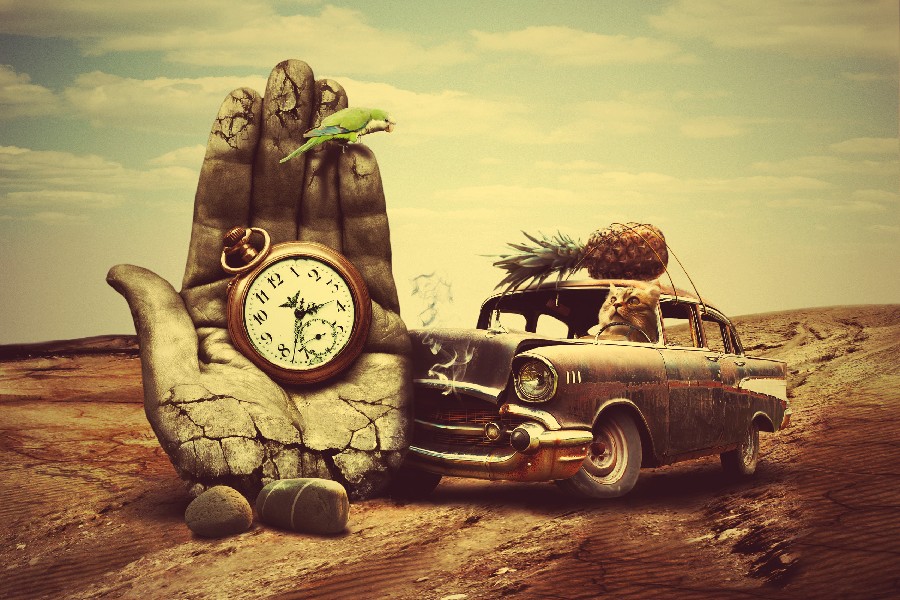
Writers need the spaces they create. The rooms, the fields, the closets that are familiar, that are unfamiliar, the spaces that act as simple symbols to tie our reveries to our memories, to the realities we wish not to disappear so suddenly. In The Sense of Beauty, Santayana writes, “In all expression we may thus distinguish two terms: the first is the object actually presented, the word, the image, the expressive thing; the second is the object suggested, the further thought, emotion, or image evoked, the thing expressed” (147). Our space reinforces our meaning and our psyche. Space coalesces our slight forms to the world around us and allows us to enlarge our heart to the proportion of mountains, or drown that weary thing at the bottom of the sea.
The speaking subject exists in his entirety in a poetic image, because unless he abandons himself to it without reservations, he does not enter into the poetic space of the image. Very clearly, the poetic image furnishes one of the simplest experiences of language that has ever been lived. (Bachelard xxviii)
A room stuffed with words, with movement, with too much furniture and too little air can create a background that becomes more than a background. It can become a space that evokes more than unease, which evokes a steady, pounding room, a room that vibrates with crisis. The space of such a room, the objects in a space— the concrete room— is where the speaker, the reader and the memory or vision becomes interchangeable.
When a writer considers the space of a story, the setting, and the objects within the setting, the writer begins to attach symbols to the surroundings. The enormous fan that has no function within the smallest, most temperate room, is even more stifling than if it were not there at all. In The Poetics of Space Bachelard says, “The purpose of space is to contain compressed time” (8) and “For a knowledge of intimacy, localization in the spaces of our intimacy is more urgent than determination of dates” (9). The urgency that is developed through the progression of a short story has limited room to shine through and provoke the reader. A writer must use every attainable weapon, even if those weapons are unattainable for the speaker.
The urgency of time is convincing enough to make us feel linear. Our natural life is diminutive; reacting against doom by filing our hours into a chronology creates a cyclical pattern of history and refutes the urgency of progression. Best Word, Best Order Stephen Dobyns writes, “Our medium is time. Not only do we constantly measure that time, but everything around us contributes to that measurement” (158). Spatial time is only an instrument to chart our chronologies; it is not concrete. For instance, imagine two astronauts that happen upon a black hole. One astronaut falls in. Though the world may never speak to him again, the world will always see him suspended in the space of the black hole. Within a black hole, time collapses and one is simultaneously falling into oblivion and frozen in time—time, in either circumstance, which occurs simultaneously, is not necessity. The body is stuck within oblivion.
Time becomes a terrible, more immediate weight when one observes another character in his relation to the universe. Bachelard notes, “Only through the accounts of others have we come to know of our unity. On the thread of our history as told by the others, year by year, we end up resembling ourselves” (99).
Keeping the role of space and time in mind, reread what you have previously written in this workshop. Give mind to each space you created—each setting in your story—and question yourself:
- Did you give too much time to this part?
- Too little time?
- Did you rush through a scene that will bear great significance later in the story?
- Did you give great significance to an object, a person, a space, that bears little weight to your story?
- Are there any points in your narrative that pull the reader out of the story and force him/her to evaluate exactly what is actually happening?
Look around the space of your story through the eyes of your speaker. Development movement through your characters’ interactions with the spaces you create. Give attention and detail to the moments of time and interactions of space that are greatly significant to your story’s plot. This attention may create symbols or points of foreshadowing that did not exist before.
Submit for Individualized Feedback
